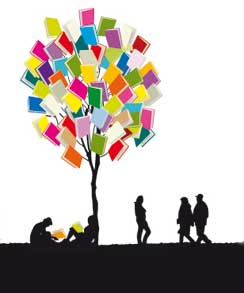2.1.15 The Island’s “poetic funds”, versifiers, minor and occasional poets from 1790 onwards

Although it is usually the most important figures who remain in the history of literature, this constitutes only the tip of the iceberg in a process of literary cementing, beneath which lie other, perhaps lesser, poets, sometimes due to the lesser artistic quality of their lyrical works, other times simply because they created few pieces or they have been lost to the annals of literature. But they played their part in culture and as drivers of creation itself, also as quantitative aggregates that contributed to the emergence of a superior quality in other poets.
In this regard, Roberto Manzano states: “…a national poetry cannot be fully understood if one has not explored the lesser poets, sympathetically entering into all the nooks and crannies of the terrain. They are the spilled seasoning, the secret garden, the silent coordinate that must be launched so that our circles may be wider, like someone who pushes forward his oikós, advancing simultaneously to all points of the circumference.”
In this category, Manzano includes Ignacio Valdés Machuca himself, Felipe Poey, Federico Milanés, José Victoriano Betancourt, José Gonzalo Roldán, Tristán de Jesús Medina, Leopoldo Turla, Ramón de Palma –as a poet- Carlos Manuel de Céspedes, Miguel Teurbe Tolón, Pedro Santacilia, José Agustín Quintero, Francisco Sellén, Antonio Sellén, Catalina Rodríguez de Morales, Julia Pérez y Montes de Oca, Isaac Carrillo O’Farril, among many others.
The names cited, although the list is longer, may give an idea of the assiduity of the cultivation of lyrical poetry in the country, and how poetry was not a “dead letter,” even though the entire accumulated collective metaphorical universe had not yet reached the level of inclusion in universal literature. These verses, titled “Preexistencia,” by Francisco Sellén, taken practically at random, serve to illustrate that the elaboration of topics and versality were not absent in these poets, in this case centered on “deja vu,” a subject rarely discussed in our literature:
“I have lived again – Where? – I don’t know,
How? When? – I don’t know, but I’ve lived.
A mysterious accent, a sonorous echo
With an extinct voice, whisper it in my ear.
The unconscious image of that life
Casts a shadow on me in which I lose myself:
And this hidden sorrow that nests
“In the depths of the soul is his memory”
Also worth mentioning is Esteban Salas (1725–1803), best known for his career as a composer. He achieved a fairly high level of education and culture for his time and even taught scientific subjects in the academic field. The texts of his autos sacramentales, although it is conjectured that some were written by Manuel María Pérez y Ramírez, have a strong theological orientation and employ biblical myths, which are worthy of literary acclaim.
Personalities from other spheres also cultivated poetry, such as the scientist Tomás Romay (1764 – 1849), whose discoveries were fundamentally associated with the field of medicine, participated in periodical publications and wrote some verses, a facet that is generally overlooked in biographical studies.
At this stage, what critics have called the “mania for versifying” was unleashed, alluding to a supposed exteriorism in the cultivation of poetry. Whether this is true or not, what is undeniable is that all poets, whatever the aesthetic rank that posterity has assigned them, or whoever holds the power to hang labels in this sense, contributed in some way to the configuration of a national poetics, multiple and at the same time crossed by communicating vessels that tend towards union.
Google tools:
Title of the point: Island poetic funds, versifiers and occasional poets
Item description: Versifiers, minor and occasional poets, are those who pave the way for the major poets who figure in national literature. It is essential to know them to have a panoramic idea of the cultivation of poetry in Cuba in the 19th century.
Key words and phrases: The poetic funds of the Island, versifiers, minor and occasional poets from 1790 onwards, literary foundation, the cultivation of poetry in Cuba, Cuban letters, Roberto Manzano, Ignacio Valdés Machuca, Felipe Poey, Federico Milanés, José Victoriano Betancourt, José Gonzalo Roldán, Tristán de Jesús Medina, Leopoldo Turla, Ramón de Palma, Carlos Manuel de Céspedes, Miguel Teurbe Tolón, Pedro Santacilia, José Agustín Quintero, Francisco Sellén, Antonio Sellén, Catalina Rodríguez de Morales, Julia Pérez y Montes de Oca, Isaac Carrillo O Farril, preexistence, the unconscious image of this life projects on me a shadow in which I lose myself, and this hidden sorrow that nestles in the depths of the soul is its memory, Esteban Salas, Manuel María Pérez y Ramírez, biblical myths in Cuban literature, , the Cuban in poetry, neoclassical poetics and its cultivators in Cuba, Cuban poetry in the period from 1790 to 1868, configuration of national identity through poetry








